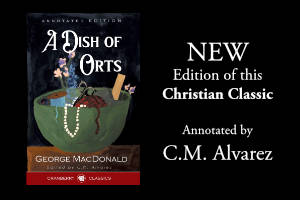This post is part of a series on books read in HBU’s Masters in Apologetics program. (Read the full list here) As the focus of HBU’s apologetics program is writing and writing effectively, Research and Writing is a class required of every person in the graduate program whether they are in the cultural or philosophical apologetics track.
Most people don’t enter the apologetics program without knowing how to write, but I think every person who has gone through it would say that they became a much better writer than when they began. We read a lot, write a lot, and then read some more. The focus is on the synthesis of ideas and understanding how different ideologies interact and their impact on society. In order to communicate those ideas, we have to be able to write effectively.
Becoming a Better Writer
The first topical area the class covers is the mechanics of reading and writing in A Manual for Writers, How to Read a Book, and Line by Line. How to read a book? I’m sure you’re thinking, “I already know how to read, why would I need to read a book about it?” I would have thought the same thing if this book hadn’t been assigned for class. How to Read a Book is a must-read for anyone who wants to read intelligently.
I’ve always been a highlighter and note taker. One of my biggest pet peeves is when books don’t have enough margin to write notes. That is one of the strategies in HTRAB, but it goes far beyond that. It teaches you the importance of defining terms, identifying key points, reading syntopically, and more. I would not have made it through a few of the classes I took with William Lane Craig if it weren’t for using some of the strategies I learned from this book.
Turabian’s A Manual for Writers has been a standard guide for writers for decades. It is something I have on hand whenever I write a paper or edit. It covers how to structure your writing, forming paragraphs, as well as the nuts and bolts of citations and grammar rules. Along with Strunk’s Elements of Style, it is something everyone should have on hand. Line by Line is a recommended resource to help become a better editor, of your own work and others.
The Nuts and Bolts of Apologetics
If apologetics is the “reasoned arguments or writings in justification of something” and Christian apologetics is the defense of the Christian faith, we have to know what we as Christians believe. Mere Christianity by C.S. Lewis is one of the most comprehensive arguments for the Christian faith from why there must be a God to why the Biblical presentation of who God is as a person is the most reliable account, from why there must be objective truth and absolute right and why our rejection of that is so dangerous, to an explanation of what Christians actually believe such as the atonement, the resurrection, and what all that means for Christian living.
The book began as a series of radio talks that Lewis gave during World War II. This spiritual strengthening was meant to give British subjects hope during a time when they were up against a dark power that seemed unbeatable. It was later transcribed and compiled into the book Mere Christianity.
MC was written for a popular audience and is very accessible. Lewis’s book Abolition of Man is on some of the same themes, the importance of objective truth, but it was written to Lewis’s fellow academics. Abolition of Man is one of those books you have to read, think about, and then read again. It makes you think about your assumptions and the information that is presented around you. Once you begin to understand what Lewis is saying, you recognize the relativism he warned against all around you. As I mentioned, when a controversy came up in my local school district, I recognized the ideology of the “Green Book” Lewis mentions in Abolition of Man. (I wrote an essay on this for the inaugural issue of An Unexpected Journal). You can’t miss the relativism in our current political climate. It is everywhere.
The thing is, not only is Truth Truth, but Jesus is Truth. If we deny truth, we are denying him. It is very important that we align our thoughts and side with him.
The other general apologetics books read in this class is Apologetics for the 21st Century by Louis Markos. This was actually the book that put me on the path to later applying for the MAA program, but that is a story for another day. Markos gives an overview of the current state of apologetics and notable apologists of the last century. If you are wondering, “what is this whole apologetics thing about,” this is a good place to start.
Engaging with Culture
We can know many reasons and arguments, but if we don’t know how to engage effectively with others then all that knowledge is useless. What you know is only one side of it, the other side is the person with whom you are trying to engage . . . and you must care about them as a person and understand where they are coming from. How to Talk to a Skeptic gives strategies for that: listen more than you talk and treat the perspective of the other person with respect. C.S. Lewis vs the New Atheists gives insight into the ideas and influences of modern atheists because as David Bentley Hart notes in his book Atheist Delusions, today’s atheists are not like your grandmother’s atheists.
Hidden Messages and the Search for Truth
Humans tell stories, and they tell them for many reasons far beyond entertainment. The primary difference between the cultural apologetics track and Biola’s apologetics program. Where Biola’s strength is in propositional arguments and marshaling facts, HBU’s is communication ideas by sparking the imagination.
One of those reasons is to persuade. Jesus did this himself, never teaching doctrine directly to the public but rather telling parables. This is one of the main focuses of HBU’s MAA and is thing ideas through engaging the imagination. Not that we don’t learn the arguments and facts, but we learn to recognize the philosophical questions being discussed in the culture around us. What is being said about truth, justice, and who determines what is right and wrong in “Batman vs Superman.” What is in Hamilton that people so connect with? What message does art such as the Fountain of Trevi convey?
To prime MAA program members, the Research and Writing class explores a rich class, Shakespeare’s Macbeth. We are all familiar with the story of how a good man can go so very wrong, but it was also Shakespeare’s political commentary, a hidden message to King James I (yes, the James of the KJV).
Influence isn’t just about political offices or commentary, we are influenced by the stories we see, hear, and read daily. It is important to be able to identify the message within.




